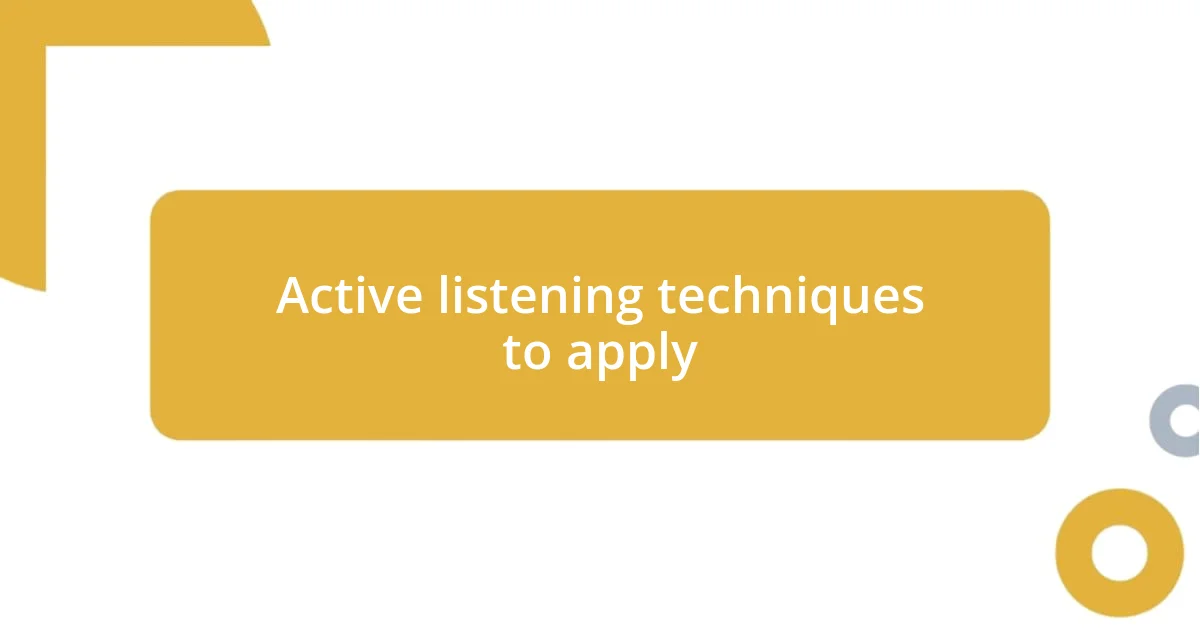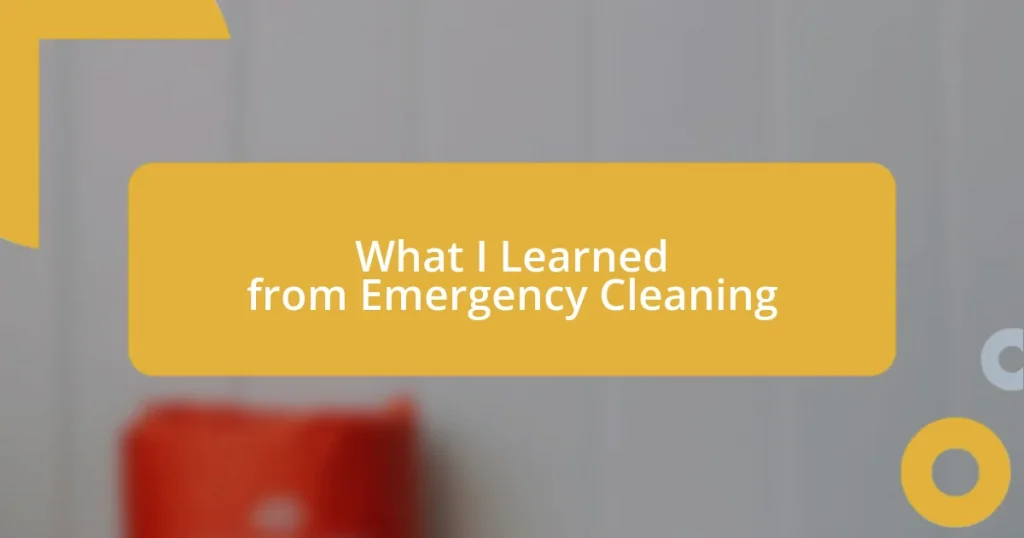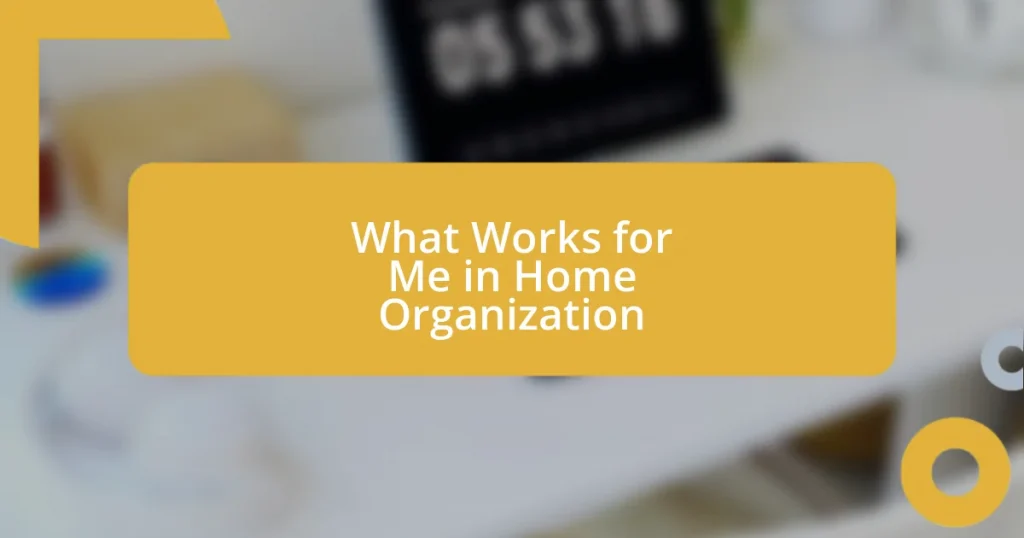Key takeaways:
- Effective communication relies on active listening, empathy, and understanding non-verbal cues to foster deeper connections.
- Building confidence in speaking through practice, thorough preparation, and gradual challenges enhances one’s ability to communicate effectively.
- Adapting communication style to the audience’s needs and preferences, and actively seeking feedback can significantly improve clarity and rapport in conversations.

Understanding communication fundamentals
At its core, communication is about conveying thoughts and feelings between individuals. I remember a time when I miscommunicated a simple idea during a team meeting—what I thought was clear turned out to be confusing. Have you ever had a similar experience? It’s fascinating how nuances in language and tone can alter the message entirely.
Effective communication hinges on active listening and empathy. I genuinely believe these are the unsung heroes of meaningful dialogue. When I focus on truly understanding my conversation partner, I can respond more thoughtfully, fostering stronger connections. Don’t you find that when someone listens without interruptions, it feels almost magnetic?
Furthermore, understanding non-verbal cues is essential. Once, during a crucial presentation, I noticed my audience’s body language—folded arms and downcast eyes—signaled disinterest. It struck me how much non-verbal communication can speak louder than words. Have you ever caught someone’s unspoken feelings? Learning to read these signals can transform the way we interact in everyday conversations.

Building confidence for speaking
Building confidence in speaking is essential for effective communication. I’ve found that practicing in front of a mirror or with supportive friends can work wonders. Just the other day, I rehearsed a presentation aloud in my living room. It felt daunting at first, but as I spoke, I could see my own expressions and posture change. What a difference it made!
When I prepare thoroughly for a speaking engagement, my confidence skyrockets. I remember preparing for a webinar and diving deep into my topic. I researched every detail, crafted my talking points, and even anticipated questions. The result? Instead of feeling anxious, I felt empowered! Isn’t it true that knowledge often brings its own comfort?
Moreover, embracing small speaking challenges can build your confidence over time. I started by sharing my thoughts during casual gatherings. Gradually, these little wins helped me tackle larger audiences. Have you noticed how each small success fuels your desire for more? Every instance reinforces the belief that I can communicate effectively—and so can you.
| Strategies | Description |
|---|---|
| Practice | Rehearse speaking in front of a mirror or with trusted friends to boost confidence. |
| Preparation | Thoroughly research your topic to feel empowered and knowledgeable when speaking. |
| Gradual Challenges | Engage in small speaking opportunities to build confidence for larger audiences. |

Active listening techniques to apply
Active listening is a powerful tool that can truly transform conversations. I recall a time when a friend shared a personal struggle. Instead of jumping in with my own experiences, I simply nodded and maintained eye contact. This allowed her to feel genuinely heard. The connection we built that day was remarkable, reinforcing the idea that active listening is far more than just quieting oneself; it’s about being emotionally present.
To cultivate this skill, consider these effective techniques:
- Paraphrasing: Repeat what the speaker has said in your own words to show understanding. It helps clarify any miscommunication and builds rapport.
- Asking Open-Ended Questions: Instead of simple yes/no questions, pose queries that invite the speaker to elaborate. This encourages deeper discussion.
- Providing Feedback: After listening, share your thoughts or feelings about what was said to acknowledge the other person’s experience.
- Being Mindful of Non-Verbal Cues: Gestures, facial expressions, and posture can convey just as much meaning as words. Tune into these signals during interactions.
- Avoiding Interruptions: Resist the urge to interject. Allow pauses; they can create space for deeper reflection and a richer dialogue.
These techniques have helped me navigate tricky conversations, making others feel valued and understood. I cherish those moments when active listening not only informs but also deepens relationships. Isn’t it impressive how simply hearing someone out can shift the dynamics of a conversation completely?

Nonverbal cues that matter
Nonverbal cues play a significant role in effective communication, often speaking louder than words. I remember a time at a networking event when I approached a group. While they were engaged in conversation, their body language—leaning in, nodding, and maintaining open postures—invited me in. It struck me that those subtle cues created a welcoming atmosphere, making it so much easier to join the dialogue. Have you ever noticed how a simple smile can bring warmth to an interaction?
Eye contact is another crucial nonverbal cue that I’ve found essential in conveying trust and confidence. When speaking to someone, maintaining eye contact helps establish a connection, letting the other person know I’m genuinely engaged. I recall presenting an idea during a meeting; by looking at each team member, I could sense their reactions and tweak my approach based on their visible cues. Isn’t it fascinating how much we can learn from just observing others?
Finally, posture can dramatically influence the way our message is received. I consciously work on standing tall and using open gestures; I’ve discovered that it not only projects confidence but also encourages an open dialogue. Just the other day, during a discussion with colleagues, my relaxed stance seemed to set the tone for a more collaborative exchange. Have you thought about how your body language might impact your conversations? Taking a moment to be aware of these nonverbal signals could help shift the entire dynamic in your favor.

Crafting clear and concise messages
Crafting clear and concise messages is an art that can significantly enhance how we communicate. I’ve often found myself overwhelmed by long-winded explanations; it’s as though the essence of my message gets lost in the fluff. Once, during a project update with my team, I decided to focus on the key points only. I lined up three main ideas and discussed them directly. The clarity in my approach not only saved time but also allowed everyone to grasp the core message effortlessly. Have you ever noticed how less can sometimes be more?
Another strategy I’ve developed is to know my audience. I recall presenting in front of a group of executives, and instead of using jargon or complex phrases, I opted for simple language that resonated with their experiences. The shift in my communication style created an instant connection. It was gratifying to see their engaged faces as I presented; it was a reminder that tailoring your message can elevate the conversation. What adjustments could you make to better connect with your audience?
Lastly, using bullet points or lists has helped me distill information sharply and effectively. I remember drafting a memo about our new project guidelines and organizing the details into bulleted points. Not only did this make the memo visually appealing, but it also enabled my colleagues to scan it quickly for essential information. It’s astonishing how a simple format can enhance comprehension. Have you thought about how structure influences your messaging? Clear and concise communication really is about making your audience’s experience as smooth as possible.

Adapting communication style to audience
Understanding your audience is crucial when adapting your communication style. I vividly remember a particular workshop I led for a diverse group, including both seasoned professionals and newcomers. I realized that using industry-specific jargon would alienate the less experienced members. So, I simplified my language and shared relatable stories to bridge that gap. Have you ever thought about how your words shape the room around you during discussions?
Moreover, I’ve noticed that age plays a significant role in how messages are received. While speaking to younger audiences, I tend to incorporate more contemporary references or humor. During one session, I used a pop culture reference that resonated well with them, and the atmosphere instantly shifted to a more relaxed environment. It highlighted the importance of being attuned to who is in front of me. Isn’t it interesting how a little adjustment in tone can forge better connections?
Another aspect I focus on is the medium of communication. For instance, I once sent a long email to a colleague who preferred quick, face-to-face exchanges. After realizing my mistake, I switched to brief in-person chats, which not only saved time but also fostered a more collaborative spirit. Have you considered how the medium you choose can affect how your audience engages with your message? Recognizing the preferences of those you communicate with can make a world of difference in how effective your message truly is.

Practicing feedback for improvement
Practicing feedback is one of the most powerful tools I’ve employed for continuous improvement in communication. When I first started seeking feedback, I was nervous about how my messages were perceived. I recall a moment when a colleague candidly pointed out that my tone could sometimes come off as overly authoritative. It was a hard pill to swallow, but embracing that criticism helped me refine my approach. Have you ever received feedback that changed your perspective?
I also make it a point to ask specific questions after presentations or meetings, which allows for more constructive responses. During one feedback session, I asked my team how they interpreted my key messages. Their insights led me to realize that, while I thought I was clear, they had been missing the underlying context. This experience taught me the value of not only giving space for feedback but actively seeking it out. What questions could you ask to elicit more meaningful feedback?
Over time, I’ve learned to create a culture of openness around feedback. In one instance, we established a weekly “feedback roundtable,” where team members could share their thoughts on ongoing projects without fear of judgement. It became a transformative space where everyone felt valued and heard. This practice served not only to improve our communication but also built stronger relationships within our team. Could fostering such a culture enhance the way you communicate in your own environment?















